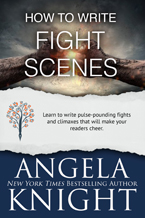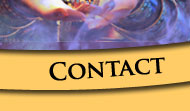
 |
How to Write a Fight Scene
New York Times bestselling genre author Angela Knight shares the secrets of researching and writing dazzling fight scenes. She shares techniques that will let you create characters who capture the hearts of readers and editors alike…even (or especially) when they’re fighting for their lives.
She discusses how to use YouTube video to research combat, then explains how you can use the principles you learn to write heart-pounding scenes of action and adventure.
Read Reviews | Read Excerpt
BUY:Amazon
|

How to Write Fight Scenes: Write fights that excite—even if you don’t know a right cross from a left jab.
New York Times bestselling genre author Angela Knight shares the secrets of researching and writing dazzling fight scenes. She shares techniques that will let you create characters who capture the hearts of readers and editors alike…even (or especially)when they’re fighting for their lives.
She discusses how to use YouTube video to research combat, then explains how you can use the principles you learn to write heart-pounding scenes of action and adventure.
Here’s an excerpt:
Choreographing fight scenes is easier than it sounds, once you know the trick. Fights have a simple logic that allows you to put them together, rather like playing a chess game against yourself.
First, the basic rule of a fight is that if somebody tries to hit you -- whether with a fist, a sword, or a bullet -- there are only two possibilities: he hits you or he misses. If he hits you, you can suffer major damage, including death, so you must make sure he doesn’t.
To force him to miss, you have two choices: block the blow or dodge. Then you try to hit him in order to take him out as quickly as possible so that he doesn’t get another chance to injure you.
At that point, he has the same choices you did: block or dodge.
That’s really all there is to it. You construct a fight one move at a time using that logic. Trouble is, this this can get monotonous if you’re not careful. You must vary the attacks, blocks and dodges to keep the reader from getting bored.
That’s actually how a real fight is fought. Predictability gives your opponent a chance to anticipate what you’re going to do and take you out.
You should vary the weapons your characters use too, making the fight less predictable. [Surprise = Dopamine.] A swordsman may punch his opponent to set him up for a lunge, or somebody may pick up a rock during a fistfight.
That’s why a big fight requires so much planning. In fact, it may be the most complicated scene you write, especially if a lot of people are involved. Either way, you want to make the fight as dramatic and surprising as you can.
The key to making a fight dramatic lies more in the emotion and sensations the characters feel rather than the individual blows. Try to put yourself in the fight. Imagine how each action would feel. Imagine the pain and exhaustion of your characters.
Remember to use all five senses. What are the characters going to see, smell, taste, touch, and hear?
Just about any fight scene in any time will include the reek of fear sweat and the copper scent of blood.
In a medieval, you’d also smell the metallic scent of armor, the musk of sweating horses, horse manure, leather and smoke. You’d hear the creak of tack, the screams of wounded men, the buzz of circling flies. Men and women howling in fear or rage.
In a modern story, you might smell gasoline and nitroglycerin from fired ammo [not cordite, which is no longer used]. In a futuristic, you’d smell ozone and exotic plastics. [Along with fear sweat and the reek of blood and gore you’ll smell in any time, any place humans are fighting and dying.]
You want to paint a verbal picture of the scene that is so vivid, the reader can see it. However, too much description can slow the scene down. Use short, sharp sentences, and don’t hesitate to throw in sentence fragments. Those effects will speed up your pacing and capture a sense of urgency and desperation.
Here's a list of the contents:
Chapter One: The Fiction Addiction
Chapter Two: Heart and the Warrior
Chapter Three: Whose Head Is This, Anyway?
Chapter Four: The Anti-Romance
Chapter Five: Physical Chess
Chapter Six: Going Tubing
Chapter Seven: Not Fair to the Three
Chapter Eight: Setting as Opponent
Chapter Nine: Rated Oh My God
Chapter Ten: Turning the Screws
Chapter Eleven: Blood and Candy
Chapter Twelve: Policing the Page
Chapter Thirteen: Believable Magic
Chapter Fourteen: Swordplay
Chapter Fifteen: His Own Worst Enemy
Chapter Sixteen: You Might Have An Anticlimax If…
Order it from Amazon.
|



















